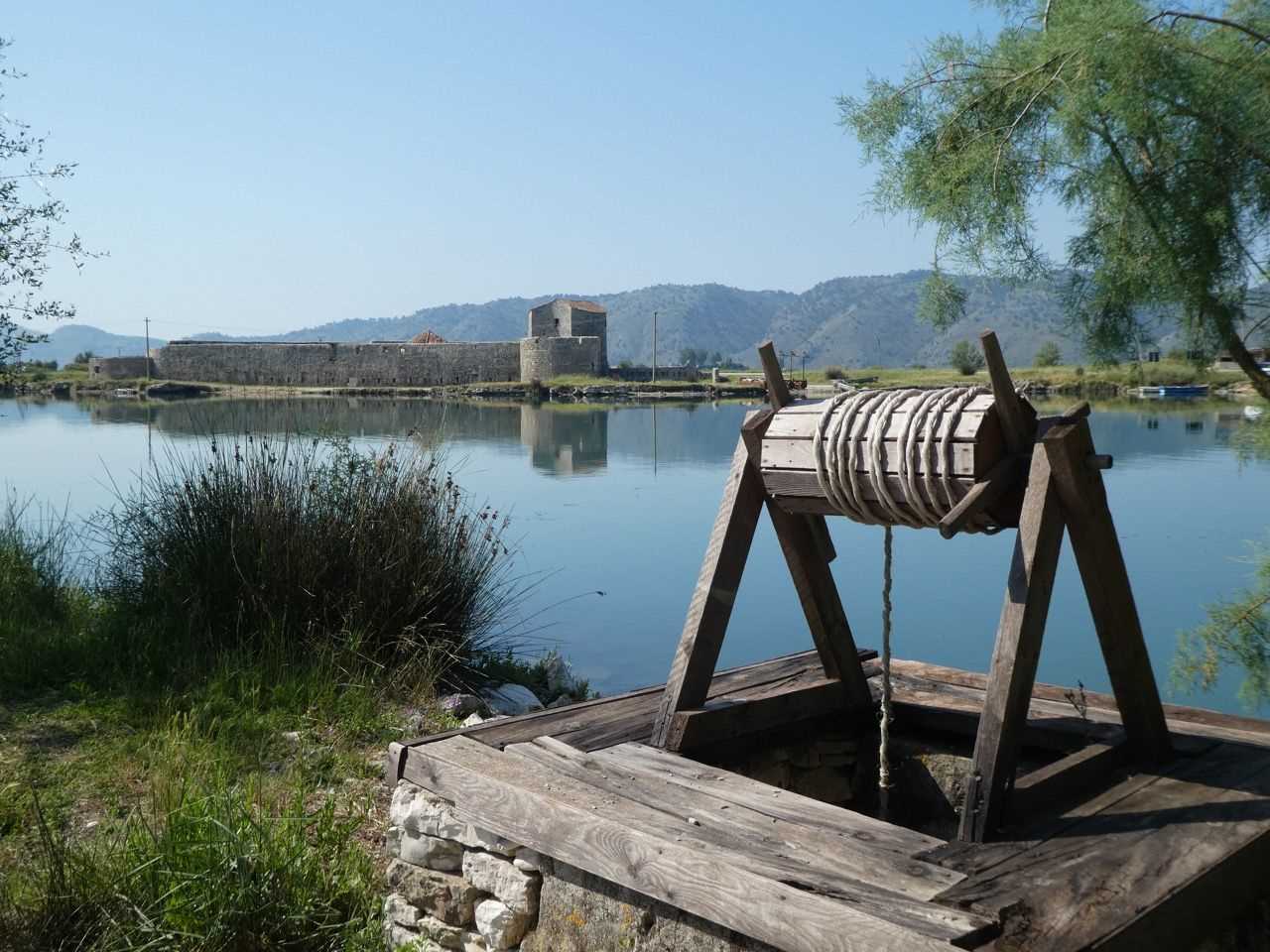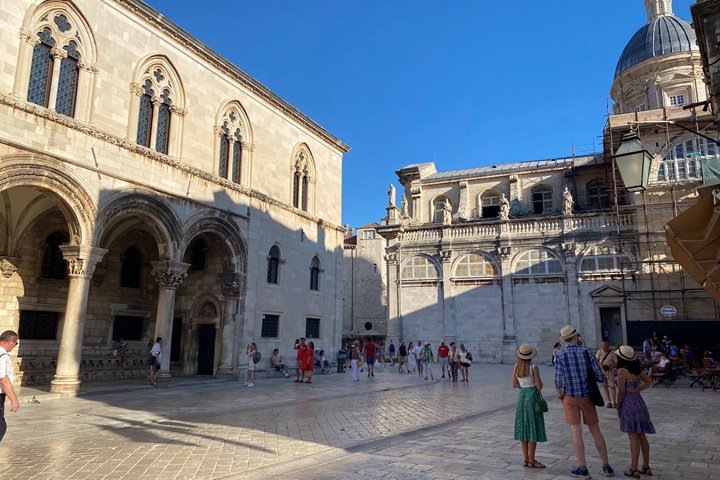We dropped anchor this morning in the bay facing the rapidly-developing beach town of Sarande (which means 40 in ancient Greek). During the Byzantine period, the port was known as Hagia Sarande in acknowledgement of the 40 Christian martyrs from the area. After tendering to the dock on Zodiacs, we drove 18 kilometers south on the Ksamil Peninsula along the shores of Lake Butrinti to the UNESCO World Heritage site of Butrint.
According to legend, the Trojans founded the settlement at the end of the peninsula adjacent to the Vivari Channel that separates Lake Butrint from the Ionian Sea. What archaeologists have determined for certain is that this magnificent trading port was founded by Greeks during the Archaic period and rose to prominence by the 4th century B.C. when the city walls and a temple dedicated to Asclepius were built at the base of the acropolis. The city grew rapidly when the Romans arrived in the 2nd century B.C. because of its strategic location, which provided shelter to the imperial naval and merchant fleets. After the 4th century A.D., during the Byzantine era, the city was an important Christian center and a number of basilicas were built in the city. A magnificent baptistery, with its double ring of eight columns and mosaic pavement, was added in the late 6th century. After the Fourth Crusade in the early 13th century, control of the straits, the rich fisheries, and access to the fertile plains in the valley north of Butrint fell into the hands of the Venetians, who fortified the region.
We entered the archaeological park through the old Venetian south gate and strolled under a canopy of oak, bay laurel, and eucalyptus trees towards the oldest part of the site: the shrine of Asclepius and the Greek theater. We learned that the Romans later transformed this area into a forum and added a small bath and numerous shops. Each civilization appears to have left its mark on the ever-changing floor plans of the buildings and defensive walls in the city. Our route around the lower perimeter of the site afforded us a number of panoramic views of the shimmering lake, fertile plains ringed by high mountains, and local fishermen collecting baskets of mussels. We accessed the upper acropolis through the Lion Gate, a narrow opening in the massive stone walls built during the ancient Greek period. After a short visit to the site museum housed in the basement of the 16th-century Venetian fortress on top of the hill overlooking the ancient city, we returned to Sarande and wound our way up to Lekursi Castle for refreshments.
During our late lunch on deck, the Sea Cloud headed 20 kilometers north and dropped anchor in Porto Palermos under the ramparts of a small Ottoman fortress that was once the stronghold of Ali Pasha, a very colorful and politically powerful, early-19th-century Albanian nationalist and all-around scoundrel. The crew rigged up a swim platform from the ship and encouraged everyone to take a dip in the clear blue waters of the Ionian Sea. In the late afternoon, we rode Zodiacs to a small beach and hiked up to the fortress for drinks, refreshments, and a marvelous cultural performance by a world-renowned folk musician. Could there be a more perfect way to end our first day in Albania?







